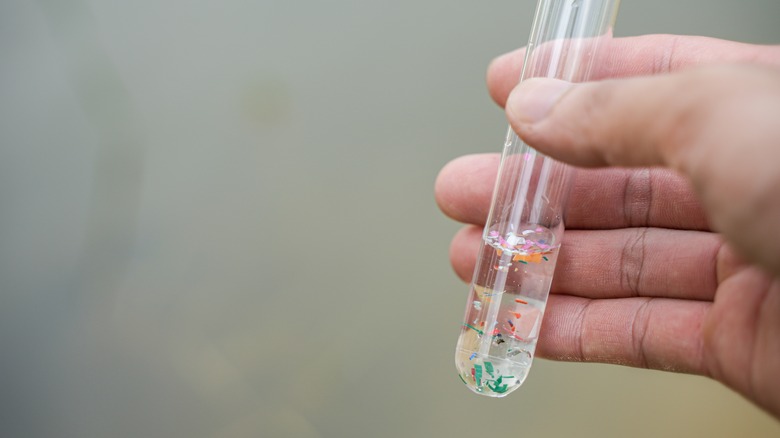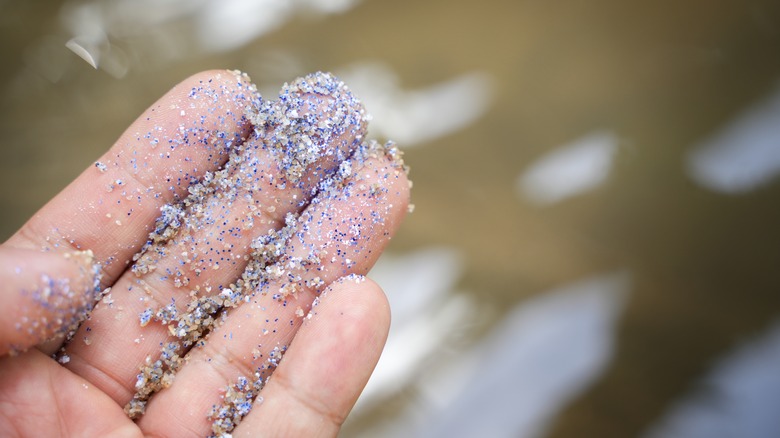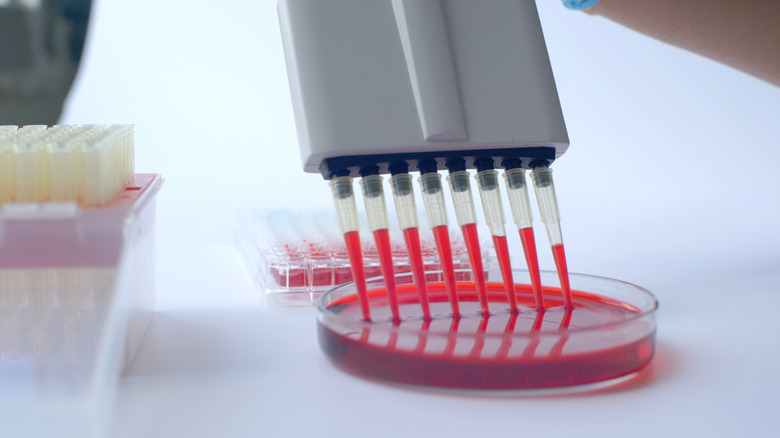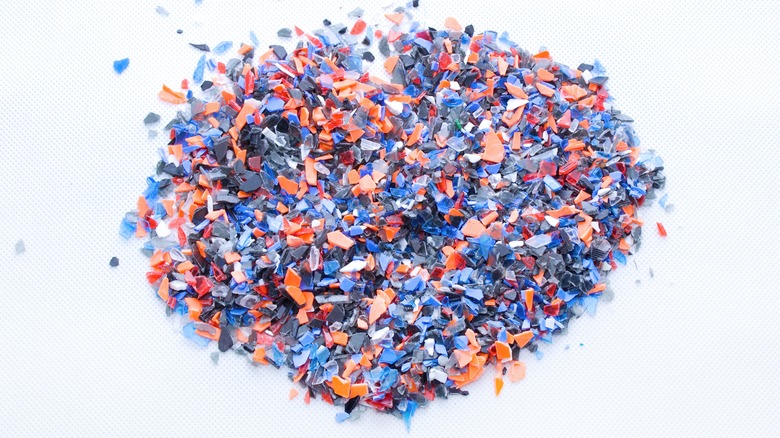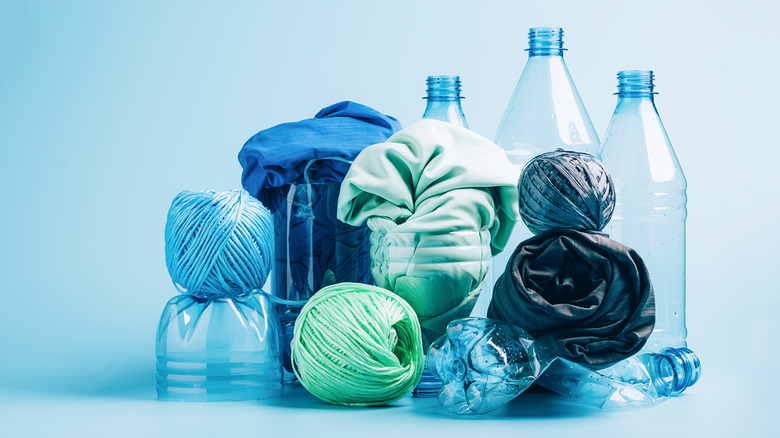Research Shows Microplastic Pollution Is Worse For Humans Than You Realize
To date, microplastics remain one of the environment's greatest threats, and scientists around the world are currently trying to figure out a solution to the microplastic epidemic.
The problem with microplastics is extensive. They affect many things in people's daily lives, sometimes in unexpected ways. According to the UN Environment Programme, the vast majority of plastics are not actually refilled or discarded sustainably but instead buried in landfills. The consequence of this is that microplastics end up contaminating water and soil sources, which could have an enormous impact on various ecosystems.
To make matters worse, researchers have found the presence of microplastics in human blood for the first time. As explained by The Guardian, scientists conducted a study that involved 22 blood donors in order to determine whether plastic particles were present in their bodies. The results were fairly shocking. Of the 22, a whopping 17 of the participants tested positive for the particles. There was evidence of PET polystyrene, PET plastic, and polyethylene in some of the samples. This marks the first time that scientists have discovered polymer particles in human blood.
So, how did microplastics end up in human blood to begin with? To answer that, one must first understand what microplastics are.
What are microplastics?
Microplastics are, as their name suggests, micro particles of plastic. They come from many sources, such as construction material, everyday household products, agriculture, factories, and so on.
As Yale Sustainability says, the definition of a microplastic is any plastic particle that is less than 5 millimeters big. There are two kinds of microplastics: primary and secondary. Primary microplastics can be thought of as the super tiny particles that exist in products like toothpaste or microbeads. These were intentionally designed at that size to function in a product. Elsewhere, Paul Anastas, the Director of the Center for Green Chemistry and Green Engineering at Yale University, says that secondary microplastics are "large plastic materials that could be used in packaging or building materials that just get ground down over time either through abrasion, wind, or sun rays, and become microplastics,"
Microplastics are basically everywhere now. As explained by The Guardian, researchers have found traces of them at even the most extreme of locations, like the Marianas Trench and Mount Everest. Not only that, but many people are probably consuming microparticles at this very moment. They exist in water, food, the air, everywhere. And there's absolutely no telling what will need to be done to fix the issue.
How did they get into human blood?
It can be quite alarming to learn that microplastics just might exist in everyone's body and bloodstream. After all, plastic pollution is one of the biggest environmental issues facing the planet today, as said by National Geographic. So, how did it come to be this way? How did something normally outside of the human body end up inside of it?
For starters, one must acknowledge that a large number of microplastics are consumed by human beings on a daily basis. National Geographic says that more than 74,000 microplastics could potentially be consumed each year by people. And given that they're so small, it's not too hard to see why that'd be the case. Microplastics are in many commonly used products, like toothpaste, so it's remarkably easy for one to swallow them. And according to E&E News, when microplastics are inhaled, they tend to stick around in the human body for a while. This means that they're absorbed by human blood and kept there for an uncertain amount of time.
How dangerous are microplastics for the human body?
The question of whether microplastics do harm to the human body is a complicated subject. There's scientific evidence that microplastics can, in fact, cause harm at the cellular level, but researchers do not yet know the full extent of this damage. It could possibly be even worse than they imagine.
As reported by The Guardian, researchers at Hull York Medical School discovered that microplastics can cause cell death, cellular damage, and allergic reactions. The extent of this damage is not yet entirely known, but there is enough data to support that some amount of harm is possible from ingestion. It is known that microplastics can cause damage to organs and other cellular systems in animals and that this potential danger could also occur in human beings. As Scientific American points out, microplastics have the potential for danger if they stay inside the body for longer periods of time. Still, the research is not yet conclusive, so scientists will have to wait and see.
Babies and children are very vulnerable to microplastic ingestion
So, there is evidence that microplastics have the potential to cause bodily harm to human beings. But one thing that might not be talked about as often is how babies and small children might be at especially bad risk for it. The problem is that babies consume an unusually large amount of microplastics throughout their development.
As stated by Mother Jones, researchers found that babies may be ingesting a fair amount of polyethylene terephthalate (PET). Specifically, they found over 36,000 nanograms of microplastic in waste matter, such as diapers. PET is also the plastic commonly used in children's products, like baby bottles and sippy cups. This conclusion signals that infants maybe have larger exposure to plastics than adults.
That's not all either: microplastics are even found in placentas. According to The Guardian, researchers also found plastics in unborn babies, proving that the problem may run deeper than initially suspected.
What is the solution to the microplastics epidemic?
It can be quite daunting to imagine solutions to a problem as big as microplastics. While there is no easy solution, as the problem is very complex, there are some things that researchers believe can be done to help stem the problem. As reported by The Guardian, plastics are fairly difficult, if not impossible, to remove from the environment once they have proliferated. Researchers suggest that the best solution is really prevention: people must stop plastics from ending up in the environment to begin with.
One of the best ways to stop plastic loss is recycling and reducing plastic use overall. Scientific American explains that a "fundamental rethinking" is required in order to make the world a more sustainable and eco-friendly place. Reducing the need for disposable plastic products — like straws and water bottles — along with properly recycling these things instead of dumping them into landfills could see a dramatic improvement of the situation.
All in all, it is going to take some work, but it appears possible. Reducing, reusing, and recycling, for now, still seems to be the right path forward.
